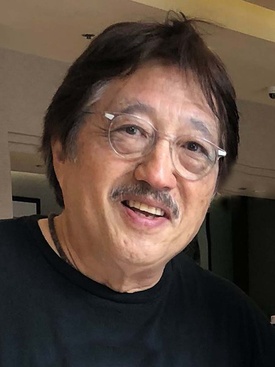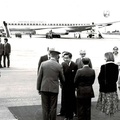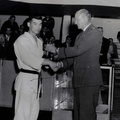From Little Tokyo to Bronzeville
When war broke out between Japan and the United States in 1941, suspicion fell on Japanese immigrants and Japanese-Americans of Japanese ancestry. Immediately after the attack on Pearl Harbor, the Issei, who were considered to be leaders in the Japanese community, were arrested, and the following year, in 1942, all approximately 110,000 Japanese-Americans living on the West Coast were sent to internment camps built in remote wilderness and swamps. There was no evidence that Japanese-Americans had engaged in acts of espionage or sabotage, but they were equated with the "enemy" simply because they had Japanese blood. Two-thirds of them were American citizens born in the United States. Meanwhile, only those deemed suspicious of German and Italian-Americans, who were also enemies of America, were detained.
Little Tokyo in Los Angeles, where about 30,000 Japanese people lived before the war, also became a ghost town. But new residents were soon to appear there. "During World War II, Los Angeles was a munitions manufacturing base, and many workers were needed to manufacture fighter planes and battleships. Many black people moved there from the South, where racist state laws such as Jim Crow laws, which included racial segregation and the prohibition of interracial marriage, were in search of work and in the hope of improving their social status. However, they too could not live in white neighborhoods due to racial discrimination in housing. Japanese towns such as Little Tokyo were one of the few places where black people could live" (Kristen).
Black businesses began to open in place of the Japanese stores and restaurants that had closed their doors, Buddhist temples were transformed into Christian churches, and Little Tokyo was transformed into a lively neighborhood known as Bronzeville, with a population of approximately 80,000 black people.
"Bronzeville had a thriving jazz scene, with Coleman Hawkins, Charlie Parker and Miles Davis all playing there. But the large number of people living in one place led to a deterioration of public health and a rise in crime, and social leaders including then-Los Angeles Mayor Fletcher Bowran viewed the area as a 'blighted area' and ordered evictions, citing the need for urban renewal, and sought to reduce the population."
Because they were only allowed to live in limited areas, they had no choice but to live in close proximity to one another, but for these black people who were now being driven out of those areas as well, Los Angeles, which initially seemed like a land of hope, was no safe haven.
Then, from early 1945, Japanese Americans were finally allowed to return to the West Coast, and gradually they began to return to their former hometowns. White media and politicians rumored and fanned the flames of fear that conflicts would break out between blacks and Japanese Americans, but voices were raised within the black community, including from the California Eagle, that showed sympathy for the Japanese Americans who had endured the hardships of internment and encouraged them to leave, and in many cases the transition from Bronzeville to Little Tokyo was recorded as peaceful.
But where else could black people who were themselves subject to racial discrimination go to leave Little Tokyo? Did they really leave willingly? Kristen explains, "Japanese people were prohibited from purchasing real estate under the 'Alien Land Law,' so most of the buildings in Little Tokyo were owned by white people. The targets of racial discrimination could change overnight, and during the war, the targets were Japanese Americans. But now that the war with Japan was coming to an end, white people thought it would be better to rent to Japanese Americans who were 'clean and didn't commit crimes,' rather than black people who were considered to be 'unhygienic and cause trouble,' so one reason they terminated the leases with the black tenants."
A racially diverse postwar community
Even after the war ended, discriminatory laws such as the Nationality Act and the Alien Land Act, which prevented Japanese people from obtaining U.S. citizenship, remained in place (the Nationality Act was revised in 1952, and the Alien Land Act was repealed after being ruled unconstitutional). Real estate had racial restrictive covenants, and even after they were banned, discriminatory practices persisted due to violence and harassment. As a result, Japanese people continued to live in areas where people of color were allowed to live, mixing with other races and ethnic groups such as blacks and Mexicans, just as they had done before the war.
Mike Murase, director of service programs at the Little Tokyo Service Center, also grew up in one of these neighborhoods. His father was a second-generation American who was born in the United States and returned to Japan as a child. Mike is a third-generation American born in Japan. His family came to the United States in 1956 and settled in the Crenshaw neighborhood, home to working-class black and Japanese people. At the time, it had been about 10 years since the end of the war, and the Japanese people were trying to somehow rebuild the lives they had lost during the internment.
"I played with black kids more than with Sansei kids. I couldn't speak English and I was too Japanese to them. Sansei kids were expected to be more American, not to speak Japanese or act Japanese."
As they grew up together, not only Mike, but the other Sansei absorbed black music and culture such as jazz and bebop, and through sports, they interacted closely with the black community living in the same area. "Race didn't really matter to children, but for adults, Japanese people would hang out with only Japanese people, and black people would hang out with only black people. We might go to the same restaurants, but we weren't in the position to invite each other over for dinner. Our cultures and social positions were different, and above all, we Japanese people didn't really understand the discrimination that black people faced. Eventually, the Sansei grew up and had children, and moved to good school districts for their education. These good school districts were areas where a lot of white people lived."
The days of interacting as neighbors became a thing of the past, and each began to create separate communities in their own separate areas.
The "model minority myth" and systemic racism
But why were Japanese Americans able to become economically successful and move out, while blacks stayed put?
"Japanese Americans also suffered from racism, but the racism and injustice that black people have faced in this country is far more severe and has continued for a long time. Overcoming any kind of discrimination and injustice is not easy, but the environment in which black people find themselves is completely different. There was slavery, and Jim Crow laws continued even after emancipation, and there are economic disparities due to discrimination that have continued from that past, as well as the system being set up in every aspect of society, including public services, education, medical care, and police, so it is impossible for them to escape this vicious cycle through self-help alone. This structural discrimination, or "institutional racism," continues to this day," says Kristen.
"When I was working in the black community, at first I saw young gangs selling drugs and thought, 'They're doing all sorts of bad things,' but when I got to know them, I changed my mind. Their mothers are drug addicts, their fathers are in prison, and they have to survive on their own without proper education or adult help. It's more like, 'Despite these bad circumstances, they're still surviving.' They want a better future just like us, but they don't have the same opportunities," says Mike.
Of course, there are economically and socially successful black people. However, overall, the poverty rate among black people is higher than that of other races, and this income disparity limits the areas in which people can live and educational opportunities, which in turn leads to poor public safety and sanitary conditions, which in turn gives rise to prejudice... This vicious cycle is the result of systemic racism.
"Also," Kristen continues, "we need to debate whether all Japanese Americans were successful. We were labeled as the 'model minority' in the 1960s, but it's also true that this has helped to hide those who were not successful and the problems in society."
The "model minority" is a stereotype used to describe Asian Americans. One of the first instances of the term being used was in 1966 in an essay by sociologist William Peterson titled "A Story of Success: The Japanese American Way."
"He wrote that despite the hardships that Japanese Americans endured during the war, including being sent to internment camps, they began to achieve social success a few years after the war ended. This was because their values of hard work and valuing family meant that they did not become a 'problem minority.' He wrote that this 'model minority' had less poverty, violence, and crime. In other words, by presenting the stereotype of the 'model minority,' he shifted the blame for the fact that the positions of black people who were speaking out in the civil rights movement at the time, and other minorities who suffered from poverty and injustice, did not change, not because of institutional racism, but because they themselves had not made an effort. He said, 'Look, instead of speaking out against discrimination, just keep quiet and work hard like the Japanese Americans.'"
During World War II, Japanese Americans were considered "enemies" because of their roots and were sent to internment camps. After the war, it was their top priority to avoid becoming the target of discrimination by achieving social success and becoming a model minority.
"You could almost say it was a survival strategy -- a need to prove oneself a good American and be accepted into American society so that something like incarceration would never happen to them again. But at the same time, anyone who didn't fit the 'model minority' category was pushed to the margins of the community. Troublemakers, the poor who needed welfare, and dropouts were treated as if they didn't exist," says Kristen.
*This article is reprinted from The Lighthouse (Los Angeles edition, August 1, 2020; San Diego edition, August 2020; Seattle/Portland edition, August issue).
© 2020 Masako Miki / Lighthouse







